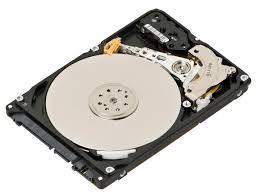This post will tell you what server hard disk is.
Brief Introduction

The hard disk which is used on server is the server hard disk. If we say the server is the core of the network data, server hard disk is the core of the data warehouse, including all data and applications. For users, the drive reliability is very important since the drive contains massive important data. To make the drive work well with large amount of data in long-working-hours environment, server will use the SAS hard disk because of its high-speed, stable and security features. In addition, low-end servers can use common SATA hard disk.
Classification
Server hard disk can be divided into the following sorts by interface:
- The SAS hard disk contains SAS 1.0 and SAS 2.0 interface. The bandwidth of the SAS 1.0 is 3.0 GB/s, and this disc has been replaced by SAS 2.0.
- SCSI hard disk uses the old and traditional transmission interface, and the disk market has stopped selling SCSI disc.
- NL-SAS (Near Line SAS) is a relative newcomer to the storage game. NL-SAS drives are enterprise-level SATA drives with a SAS interface, head, media and rotational speed.
- FDE/SDE is the SAS hard disk hardware encryption developed by IBM, and its performance is equivalent to the SAS hard disk. In addition, FDE/SDE disc provides encryption system to prevent private data from being leaked.
- SSD (solid-state drive) uses the class SSD detection system, and uses the SAS 2.0 protocol for transmission.
- FC hard disk is mainly used in the external SAN which uses the optical fiber as the main transport protocol. This disc has dual-channel and uses the Fiber Channel to transfer information, thus it has high-speed transmission.
- SATA interface hard disk is known as the serial hard disk. It is the main developing trend of the future PC since it has a strong error correction capability, and it can automatically correct the found errors. Thus, it can greatly improve the data security when users are transferring data. The new SATA uses the “differential-signal-amplified-system”, which can filter noise out from the normal signals so as to make the SATA work with low-voltage.
Server hard disk can also be divided into simple-swap and hot-swap by hard drive bays.
Hot-swappable hard drives typically use SAS interface. And pulling out a piece of bad hard disk will not affect the stability of the whole system because of the RAID redundancy. But the entire function must be supported by an array of cards and hard disk backplane. This type shelf usually has external wrench. Simple-swap hard drives are common drives. Its shelf is blue.
Features
- High-Speed: The server uses the hard drive which can reach 7200 or 10,000 revolutions per minute. It also provides a large write-back cache, so the average access time is relatively short, and the external transfer rate and internal transfer rate are higher.
- High reliability: The server hard disk will bear tremendous workload since it keeps working for 24 hours. Each hard drive manufacturer has adopted their own unique advanced technology to ensure data security. In order to avoid accidental losses, server hard disks are generally able to withstand the impact of 300G to 1000G.
- SCSI Interface: Most servers use the SCSI/SAS hard disk because of its data throughput and low CPU share. SCSI hard disk must have SCSI interface. Therefore, some server motherboards integrated SCSI interface, and some are equipped with dedicated SCSI interface card. A SCSI interface card can pick seven SCSI devices.
- Support Hot-Swap: Hot-swap is a hard disk installation supported by the server. If users remove or insert a hard disk, the operating system can automatically recognize the change of the disk. This technology is very necessary for the server which runs 24 hours a day. Of course, most current SATA hard drives also have this feature.